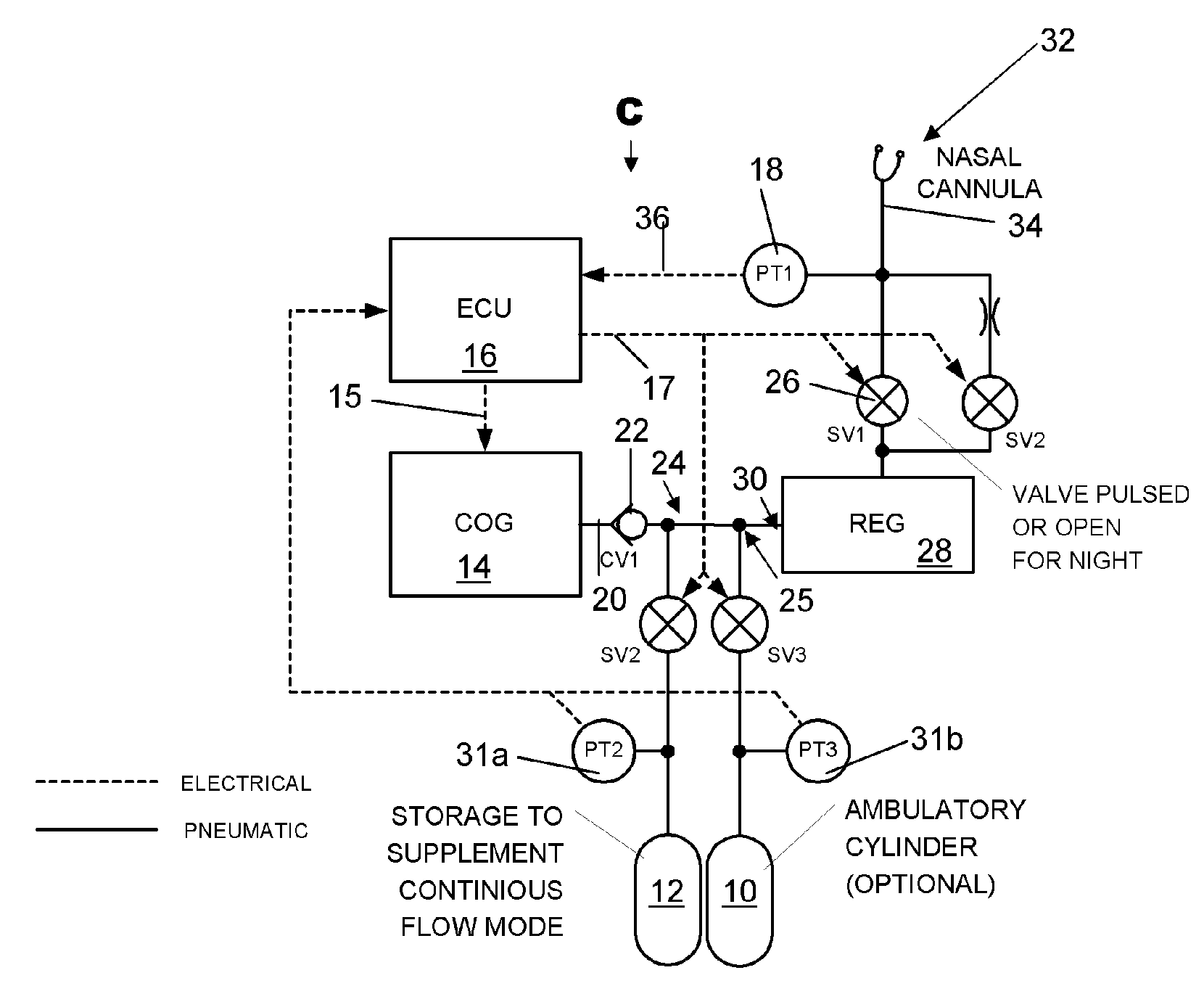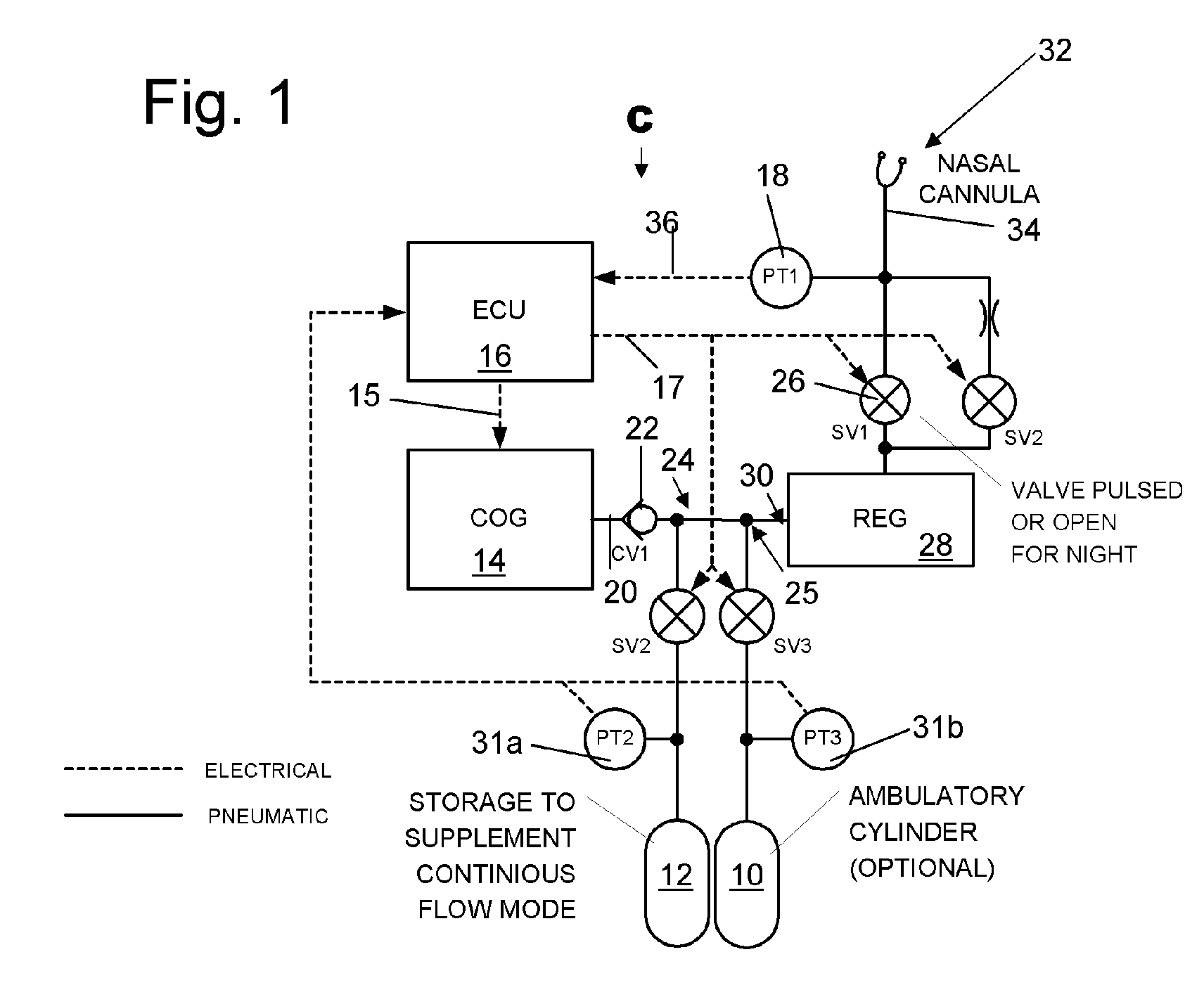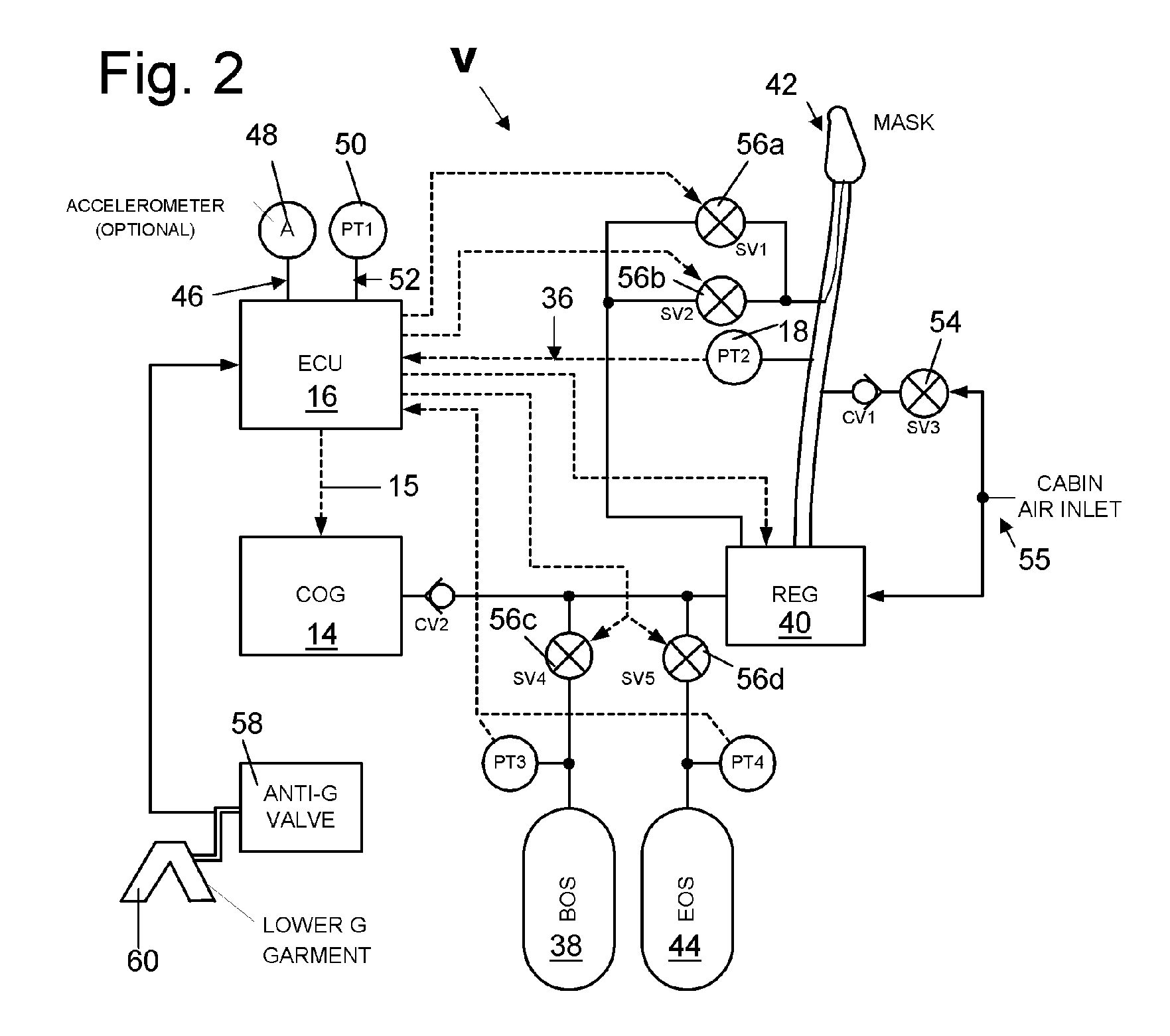Oxygen generator with storage and conservation modes
a technology of oxygen generator and storage mode, which is applied in the field of electrochemical gas generator, can solve the problems of less compressed air available for the psa oxygen concentrator and other air handling systems on the aircraft, reduce the time of exposure that the crewmember can safely stay at the higher altitude, and reduce the scrapping of imats , the output oxygen purity of the low pressure subsystem of the present invention is very high
- Summary
- Abstract
- Description
- Claims
- Application Information
AI Technical Summary
Benefits of technology
Problems solved by technology
Method used
Image
Examples
Embodiment Construction
[0042]So that the manner in which the above recited features, advantages, and objects of the present invention are attained can be understood in detail, more particular description of the invention, briefly summarized above, may be had by reference to the embodiment thereof that is illustrated in the appended drawings. In all the drawings, identical numbers represent the same elements.
[0043]Referring particularly to FIGS. 1 and 2, a first embodiment of the present invention includes an electronically controlled unit 16 controlling the operation of an electrochemical oxygen generating system or COGS 14 that produces a controlled amount and pressure of a desired gas such as oxygen. The output or product gas from the gas generating system 14 is fed either to a storage unit 12 or to a regulator 28 that controls or governs the product gas flow to a user of the purified oxygen or other gas. A pulsing valve 26 may be included with the regulator 28 to further govern the amount and flow of t...
PUM
| Property | Measurement | Unit |
|---|---|---|
| altitudes | aaaaa | aaaaa |
| altitudes | aaaaa | aaaaa |
| pressure-altitude | aaaaa | aaaaa |
Abstract
Description
Claims
Application Information
 Login to View More
Login to View More - R&D
- Intellectual Property
- Life Sciences
- Materials
- Tech Scout
- Unparalleled Data Quality
- Higher Quality Content
- 60% Fewer Hallucinations
Browse by: Latest US Patents, China's latest patents, Technical Efficacy Thesaurus, Application Domain, Technology Topic, Popular Technical Reports.
© 2025 PatSnap. All rights reserved.Legal|Privacy policy|Modern Slavery Act Transparency Statement|Sitemap|About US| Contact US: help@patsnap.com



